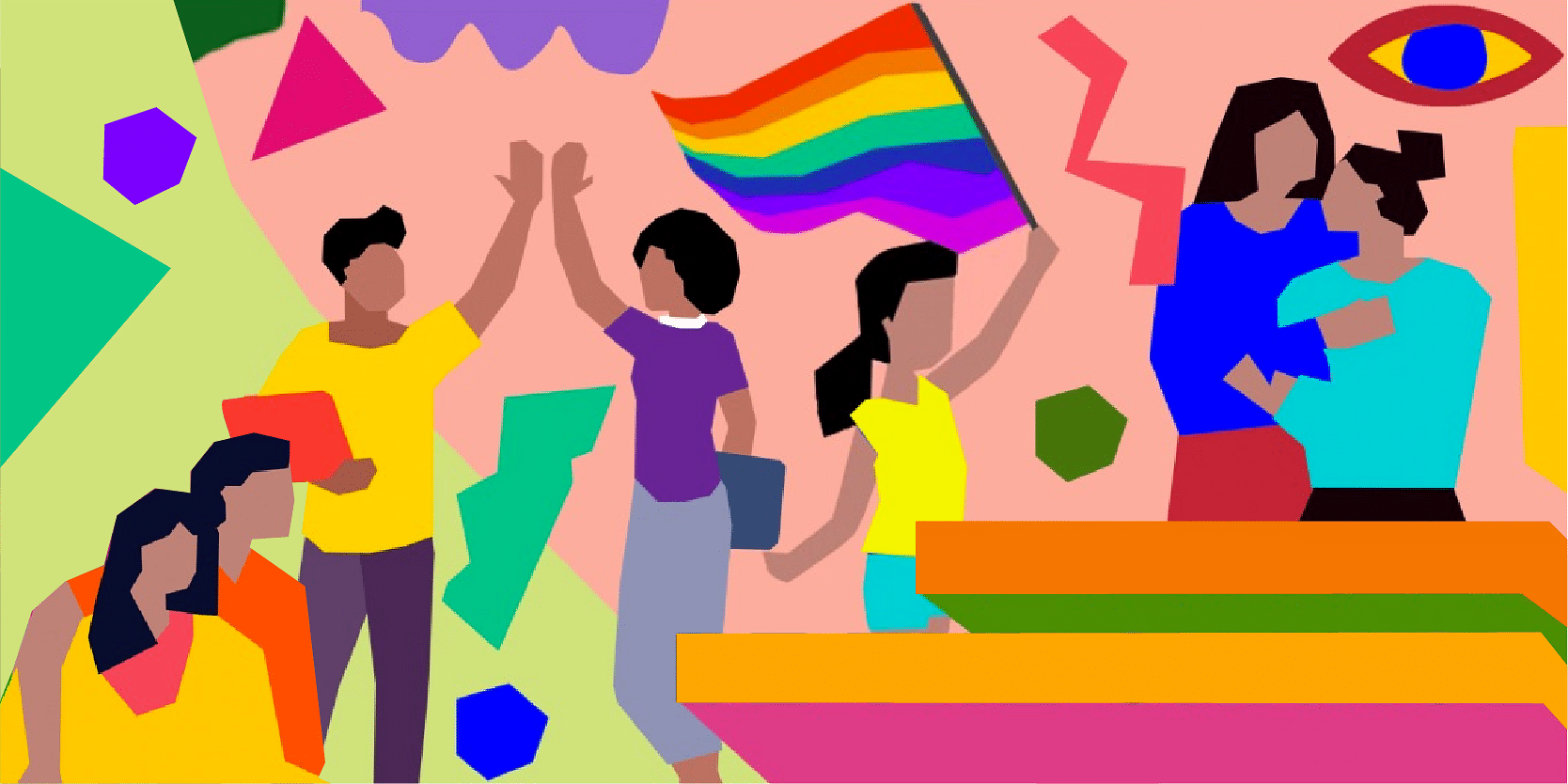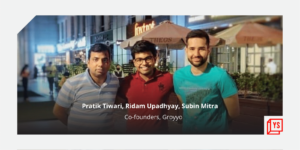[Trigger warning: mentions suicide, violence, mental health]
Is ‘queering the workplace’ a distant dream, a work in progress, or the corporate conversation checklist that peaks during Pride month before it stops ‘trending’ and #Pride loses its ‘viral’ steam? Or is it now woven into the DNA of progressive brand culture?
Every June, rainbow capitalism raises its head and paints billboards and social media pages. Out-and-proud celebrities, rights activists, authors, lawyers, corporate leaders are invited to talk. Allies cheer loud. It’s inclusion inside out.
But in other times, the marginalisation of gender and sexual minorities has historically operated by silencing their voices and invisibilsing them in the formal economy.
A brighter, inclusive future demands greater representation across economic, cultural and media spaces, and enabling voices from within the lesbian, gay, bisexual, transgender, queer/questioning (LGBTQ+) communities—‘+’ represents several other identities such as pansexual, agender, non-binary, and gender fluid.
A future where individuals have the courage to come out of the closet, gain financial autonomy, social security, health rights, mental health support, cultural legitimacy, and ownership. The spectrum itself is intersectional—LGBTQIA+, where ‘I’ denotes intersex and ‘A’ stands for asexual or aromantic and is still including.
For workplaces to be pro-LGBTQIA+ individuals, it is paramount to understand intersectional identity challenges—an area that Diversity and Inclusion (D&I) corporate chiefs are reluctant to acknowledge. This requires understanding how other marginalised identities of caste, class, regional demographics, and religion further marginalise gender and sexual minorities. The historical and intergenerational cycles of discrimination and abuse have created complex internalised biases.
Given this context, stakeholders at organisations need to acknowledge that everyday lived experiences and struggles, including discrimination at home and the workplace, of LGBTQIA+ individuals are vastly different. This lends urgency also in addressing a host of mental health conditions, including stress, anxiety, fear of being called out, and fear of gender expression.
Any organisational culture transformation has to, above all, address internalised biases and deep prejudices ingrained in heteronormative work structures.
Gen Z loves diversity and inclusion
In the absence of any recent official demographic data on the exact number of LGBTQIA+ individuals in the country, a 2014 case study conducted in India by Lee Badgett for the World Bank, titled ‘The Economic Cost of Homophobia’, puts things in perspective. It estimated India would lose up to 1.7 percent of its GDP every year through LGBTQIA+ exclusion, which was about $30 billion at the time.
From existing as an afterthought, to a grand gesture or ticking-off-the-box grandstanding, corporate D&I dialogue has evolved to discuss insurance for gender transition surgeries, same-sex partner benefits, and queer affirmative therapy, among other things.
“The concept of diversity itself is evolving,” says Moulee C, Co-founder, Queer Chennai Chronicles. “Two decades ago, diversity meant ‘gender’ or inclusion of women in the workforce, their greater representation in leadership or having pro-women policies. Later, it came to recognise the rights of persons with disability. Today, it’s about LGBTQIA+ representation and having policies to retain them in the workforce.”
There is a generational shift in the workplace today: Millennials and Gen-Z workforce are imbibing a new language of self-expression. As their relationships with the self, family and partners undergo a metamorphosis, so are their preferences in brands and taste in consumerism. And in their workplace dynamics.
In his book Queeristan: Inclusion of LGBTQ in the Indian Workplace, author, LGBTQIA+ rights advocate, and out-and-proud gay man Parmesh Shahani describes inclusivity as making good business sense because it fosters creativity.
“Diversity brings diverse ideas and fuels out-of-the-box thinking and innovation. Creative thinking that challenges existing assumptions and structures also pave the way for engineering a new vision at work,” he says. “It also helps one tap into untapped, underutilised talent and break into new frontiers in terms of cracking a new customer base, who might have been previously underserved and underrepresented. Overall, it enhances productivity.”
Parmesh is the former head of Mumbai’s cultural programming hub Godrej India Culture Lab. He also worked at the legacy brand Godrej Industries. The conglomerate is known to have adopted inclusive policies of same-sex partner benefits and gender-neutral adoption leave as well as the Godrej Gender Affirmation Policy—offering reimbursements for gender reaffirmation surgeries. He has also looked at the inclusion policies of companies such as Tata Steel, the Lalit group of hotels, and IBM.
In his book, Parmesh sees the workplace as a “space of identity reconciliation”, and the home as an oppressive place where non-binary persons might have to live by “identity erasure”. The workplace, though, ought to be accommodating of modern love, passion, aspirations and ‘pride’, he writes.
Parmesh is convinced that pro-LGBTQIA+ policies will ensure that startups are able to attract and retain talent longer. “If you can invest in marketing and promotions, you can surely invest in employee assistance programmes (and) providing counsellors… , insurance for gender reaffirmation surgeries, and peer group support,” he says, “Invest in infrastructure, for instance, gender-neutral washrooms. Have provisions for same-sex partner benefits.”
He adds that 70-80 percent members of gender and sexual minorities feel favourably about organisations that provide mental health and emotional well-being support.
LGBTQIA+ mental health in the workplace
Moulee argues that the typical corporate approach to inclusion is limiting as it does not acknowledge the intersectional identity challenges and struggles–from queerphobia to trans trauma, or how caste minorities among the gender and sexual minorities may find it further difficult to navigate workplace dynamics.
“Managers often hold the idea of differentiating between personal and professional boundaries. This is important in terms of work-life balance. But this is often used as a shield to not truly incorporate inclusive practices, because talking about one’s gender and sexual identity is seen as a ‘personal’ topic,” says Mumbai-based Shweta Srinivasan, therapist and Co-founder of TheMindClan.com.
“Managers experience a learning arc through workshops and conversations, where they begin to recognise that it’s actually a function of cis-het (cisgendered-heteronormative) privilege to be able to separate one’s professional space from one’s gender and sexual identity.”
She adds: “When a queer or trans person has to navigate the workplace by being made to hide their identity out of fear and stigma, not openly celebrate an anniversary or a partner’s birthday, not be able to share and grieve with their close colleagues about a break-up, needing to fit into certain dress codes with colleagues or stakeholders which does not align with the gender they are—all of this and more can impact the employee’s mental health and how safe they feel within the workplace.”
The queer affirmative lens to mental health
From enabling queer affirmative therapy and having tie-ups with therapists and counsellors who are queer affirmative in their practices, organisations can take multiple steps to address LGBTQIA+ workplace mental health.
For one, the workplace concerns of the queer community are unique, says Harshika Ramasubramanian, Founder and Chief Counselling Psychologist, Ekya Counselling Centre in Thane. “Those are called Unique Life Stressors. For example: fear of losing their job if they come out about their gender or sexuality, or workplace abuse (physical, verbal, sexual), or the lack of accessibility to public facilities in many places, leading to feelings of shame and discomfort.”
While Harshika has been an ally since 2018, it was only this year that she began practising queer affirmative counselling after completing a course in Queer Affirmative Counselling Practice by the Mariwala Health Initiative.
More than mental health conditions, Harshika emphasises on the need for emotional well-being and safety that was lost for many due to remote work and lockdown. “It did take a toll on their mental health and there was a spike in depression or suicidal ideations,” she says.
Mabel’s story
Mabel, aka Mayuri Ghosh, has been seeking psychiatric help the last couple of years, mostly due to personal reasons.
“One of the reasons why I approached online therapy or counselling sessions was less to do with the workplace and more to do with just going about with life because sometimes there are feelings that need to be processed, there are events that need to be processed,” explains Mabel, content lead at Tea Trunk, sharing their experience as a queer individual. “The reason why I started was because I didn’t have the language to process the changes I was through.”
A precious piece of advice that Mabel shares for someone seeking therapy is to dissociate the idea of online therapy or counselling sessions from the idea of ‘suffering’.
“It could be just to have a sounding board sometimes, to actually process things that you are going through, things that hurt you, things that might cause you anxiety for no reason because of the changes that you might be going through. How do you cope with such change? Do you have a language for it?” says Mabel.
Also, Mabel says they don’t recommend a therapist or counsellor unless they follow some queer-affirmative practices, “irrespective of whether the person seeking therapy is queer or not.”
The workplace as an intersectional ally
For all this, startups and larger companies having well-meaning and inclusive well-being policies in place for LGBTQIA+ individuals may not be enough.
Moulee says that despite Diversity, Equity and Inclusion chiefs steering inclusive policies, say same-sex partner benefits, reports suggest individuals do not avail such benefits.
“There is still the fear of stigma; of being labelled. Above all, the fear of retaliation in the workplace. Just having inclusive policies isn’t enough; who would take ownership of any adverse impact on their professional journey and emotional well-being? In the absence of such engagement, a policy might just be on paper,” says Moulee.
Inclusion is also not a magic pill.
“Apart from the inherent biases cis-het stakeholders come with, the biggest challenge is to help them understand that there’s no one-size-fits-all approach to making the workplace a safe space,” stresses Shweta of TheMindClan.com.
Inclusion and its lexicon of change and resistance need to be part of the workplace grammar beyond Pride month. Parmesh says it plainly, “It needs to be a given, rather than something that still needs to be done.”
[Lead image credit: Aravani Art Project]








![Read more about the article [Jobs Roundup] These openings may help you land a role at global B2B payments platform Nium](https://blog.digitalsevaa.com/wp-content/uploads/2021/07/Imageemjp-1625637249460-300x150.jpg)

